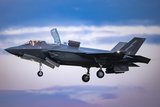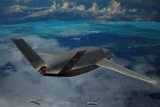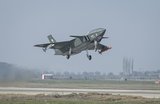Lessons learned from supplier switching on fast jet fleets
Indonesia has long managed the Sukhoi Su-30 in its air force. (Photo: Wikimedia Commons/Arya dhieva1)
Changing an air force’s primary supplier of combat aircraft is not something to be done lightly. Beyond the obvious hardware and integration aspects it requires a focus on training and doctrine.
As F-35 exports have shown, procurement of military equipment is largely decided by politics over a weapon’s utility or its required capability or the weapon’s utility. Ships, tanks and combat aircraft are big-ticket items, infrequently sought, and represent a clear statement as to the customer’s defence and diplomatic ties.
Yet, by the same token, a change in government, or circumstance, and the resultant new geopolitical outlook can have an
Already have an account? Log in
Want to keep reading this article?
More from Air Warfare
-
![Airbus MQ-72C Lakota Connector progress on track ahead of pending USMC decision]()
Airbus MQ-72C Lakota Connector progress on track ahead of pending USMC decision
The MQ-7C uncrewed aircraft is currently undergoing further internal flight tests ahead of a government test event anticipated for next year.
-
![November Drone Digest: GA-ASI eyes Middle East for Gambit, Edge Group unveils new UAVs]()
November Drone Digest: GA-ASI eyes Middle East for Gambit, Edge Group unveils new UAVs
In November 2025, GA-ASI unveiled a new Gambit variant, the Gambit 6, and appears to be pitching the aircraft series to various customers in the Middle East, which is a fast-emerging CCA market. The Dubai Airshow also saw the unveiling of various Emirati aircraft from Edge Group.
-
![Baykar’s Kizilelma drone makes progress with first air-to-air kill]()
Baykar’s Kizilelma drone makes progress with first air-to-air kill
This test is the latest milestone achieved by the indigenous drone, destroying a target using a beyond-visual-range missile.
-
![Lockheed plans further solid rocket motor investment in Europe and Middle East]()
Lockheed plans further solid rocket motor investment in Europe and Middle East
The company has worked to heavily invest in its solid rocket motor production capabilities, both in the US and internationally, to build a strong supply chain to meet growing demand.
-
![Boeing to build Apache AH-64E attack helicopters for Poland, Egypt and Kuwait]()
Boeing to build Apache AH-64E attack helicopters for Poland, Egypt and Kuwait
The $4.7 billion international order for the three countries will see production conclude around May 2032.
-
![How the US Air Force plans to use data analytics to enhance the roles of airmen and assets]()
How the US Air Force plans to use data analytics to enhance the roles of airmen and assets
The USAF has allocated nearly US$500 million to further the deployment of this type of technology in FY2026. It envisions using analytics to enhance sensors, weapons, missiles and human performance.
























